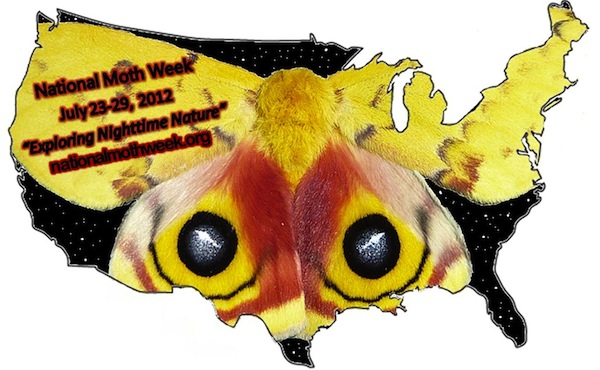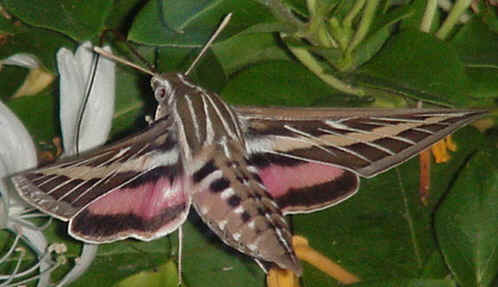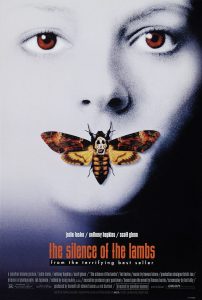Butterflies, Monarch butterflies in particular, seem to get all the press–and yet their night-flying cousins can be equally endearing and beautiful, providing useful pollination and food chain chores for our greater good. Vastly under celebrated, moths are finally getting some well-deserved attention thanks to the first National Moth Week, July 23 – 29.

First National Moth Week, July 23 – 29, 2012
Started by several environmental scientists and insect enthusiasts in East Brunswick, New Jersey, National Moth Week grew out of occasional celebrations the group enjoyed hosting “Moth Nights” on the east coast and rides on the citizen scientist movement typified by Monarch Watch. At a Moth Night, enthusiasts gather in the evenings with sheet-covered lights and old beer to draw the night flyers in for close inspection and photographs.
Interested? If so, leave a comment.
The National Moth Night website offers a wealth of resources, including step-by-step instructions for hosting a Moth Party and recipes for making Moth Bait, which often features stale or fermented fruit, sugar, beer or wine. Moths are literally suckers for stale beer.
“Basically, we want people to go out and have fun,” David Moskowitz told Southern Rhode Island Newspapers. Moskowitz, a New Jersey-based biologist who also works as a senior vice president for environmental consulting firm EcolSciences, collaborated with New Jersey oceanographer Liti Haramaty to get National Moth Week off the ground.

C’mon, admit it: she’s adorable. Sphinx Moth, photo courtesy Colorado State University extension office
“If we can use National Moth Week to turn them on to what’s in their own backyard, then hopefully something will click and they’ll start to think twice about environmental issues like recycling, and preserving habitats and biodiversity,” said Moskowitz.
Why is it that moths don’t get the attention and respect of butterflies?
Most are grey or brown, which makes them more drab than visually appealing. Their erratic flight pattern can be creepy. Flailing around and diving at lights can put people off. Moths’ habit of coming out at night also raises some shackles and perhaps unpleasant, scary associations. And then there’s the fact that much of our contact with moths amounts to finding them ruining our sweaters and winter wear.

Look at that face! Tobacco Hornworm on Jimsonweed
As we’ve written here before, the 1991 thriller The Silence of the Lambs, starring Jodi Foster as tenacious cop Clarice Starling and Anthony Hopkins as cannibalistic serial killer, Hannibal Lecter, didn’t help moths’ reputation. In the award-winning movie, “Hannibal the Cannibal” places the cocoon of a certain species of hawk moth, the Death’s Head Hawk Moth, in the mouths of his victims as some sort of sick gesture of transformation. The moths fly around in a creepy, dark basement and evoke a weird terror.

The thriller, Silence of the Lambs, contributed to moths’ creepy rep.
But not all moths are scary or ugly. The Sphinx Moth, for example, sports black, grey and white stripes and often is mistaken for a hummingbird. It sometimes carries out its aerial ventures during the day, hovering on late afternoon blooms.
In the caterpillar stage, the distinctive creature sports seven black-dotted stripes on a plump green body, its namesake “horn” reaching from its rear-end. When bothered, the caterpillar strikes a stately “sphinx” pose, arching its head and shooting an annoyed look.
NEXT: The Black Witch Moth
Like what you’re reading? Follow butterfly and native plant news at the Texas Butterfly Ranch. Sign up for email delivery in the righthand navigation bar of this page, like us on Facebook, or follow us on Twitter, @monikam. You can also read our stuff on the Rivard Report.
Thank you so very much for your time and efforts to share this phenomenon with us!!
By the way those amazing moths were in Shenandoah Iowa.